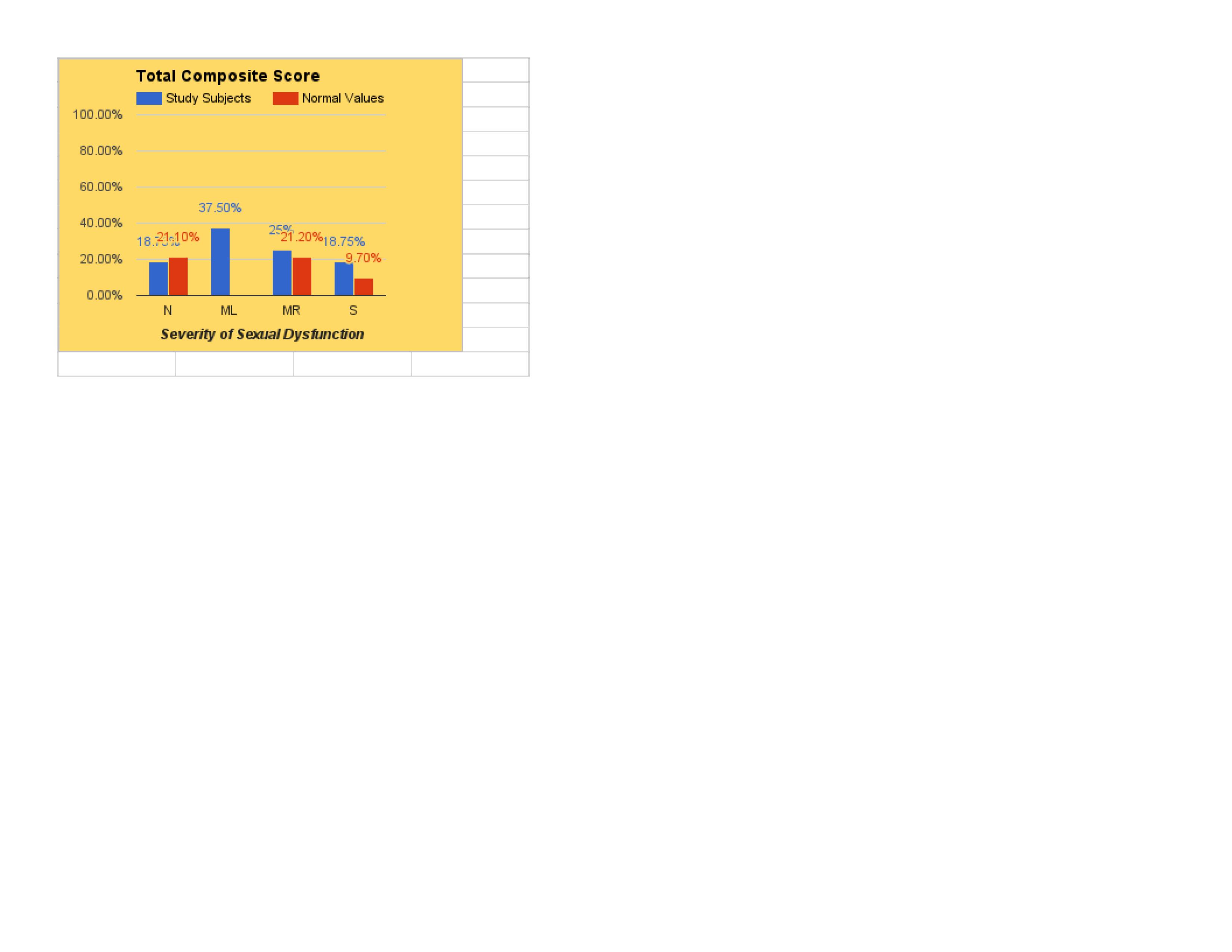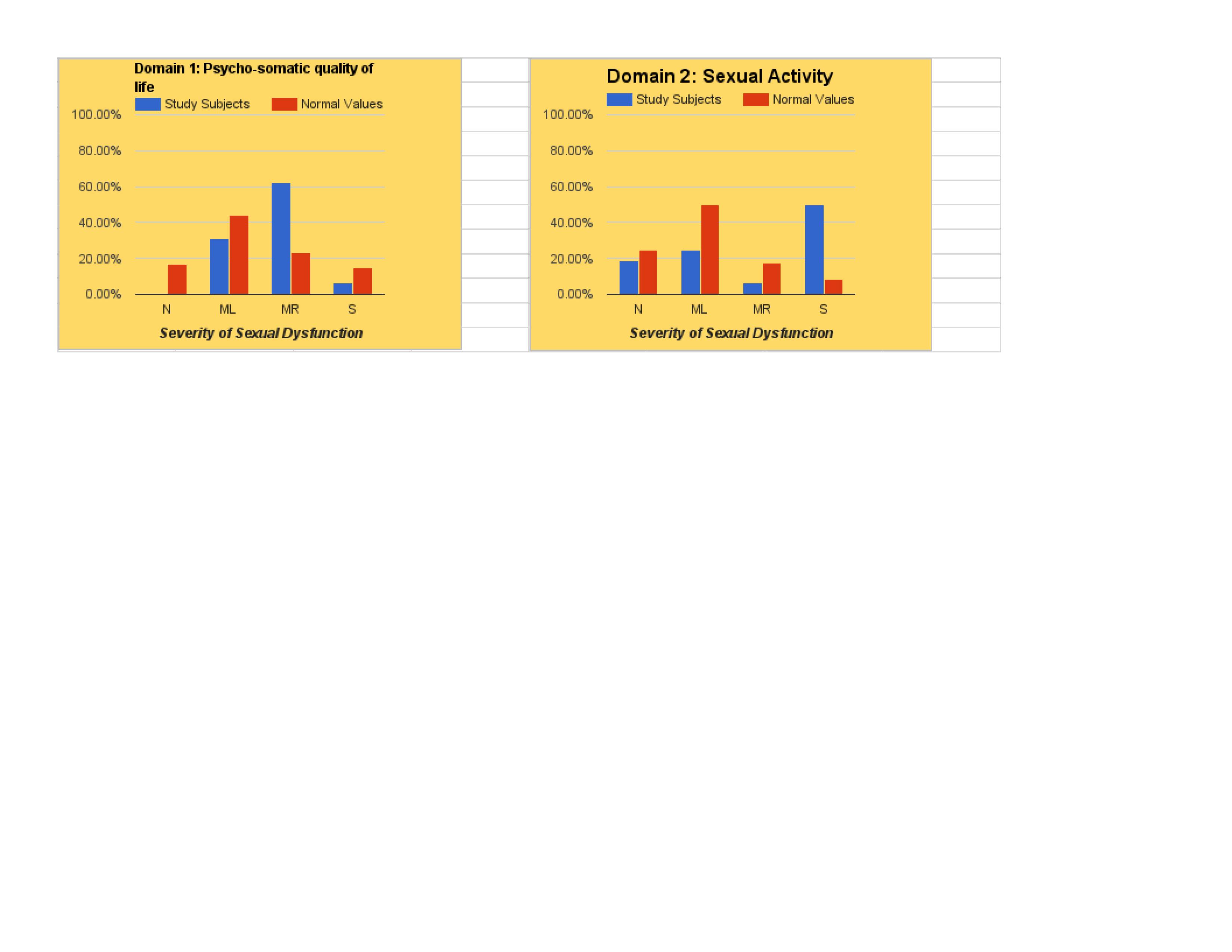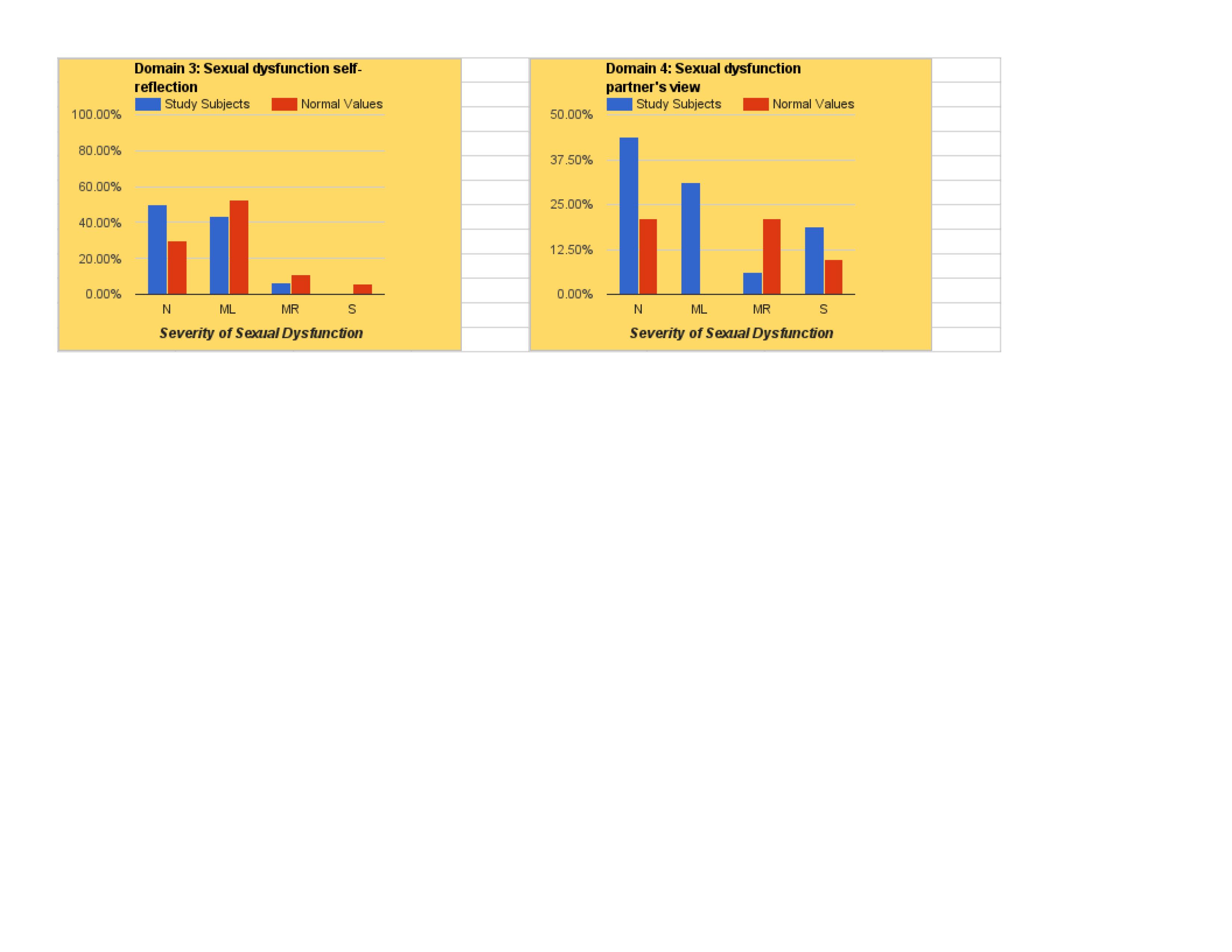Session Information
Date: Monday, June 5, 2017
Session Title: Parkinson's Disease: Non-Motor Symptoms
Session Time: 1:45pm-3:15pm
Location: Exhibit Hall C
Objective: To assess the prevalence and significance of sexual dysfunction (SD) in women with Parkinson’s Disease (PD) in comparison to general population, highlight the specific sexual complaints in women with PD
using a validated survey, and understand the role of motor and non-motor PD symptoms, medication effect and comorbidities in SD.
Background: PD is a neurodegenerative disease that presents with multiple disabling motor and non-motor symptoms, such as SD. Male SD is more frequently recognized in clinical encounters. This study focuses on SD in women as it is an important factor in patient quality of life and ability to cope with PD symptoms and consequences, such as depression.
Methods: We intend to enroll 100 female PD subjects over 6 -12 months. We have enrolled 16 subjects with ages 46 to 84. Eligibility criteria were applied. Chart review was done. Verbal consent was obtained. 53 questions were given based on the validated Scale for Quality of Sexual Function (QSF). 32 questions were split into four major domains as designed by QSF: Psycho-somatic quality of life, Sexual Activity, SD
self-reflection, and SD partner's view. Four main composite scores were calculated based on those domains, and a total composite score (TCS) is the sum of those scores. 21 questions were added to
cover demographics, comorbidities, treatments, and other complaints. PD severity was assessed using UPDRS. All scores were compared to QSF normal values. All data collected was anonymous.
Results: The major impact on the TCS was derived primarily from the sexual activity domain as 50% of PD subjects vs 8.2% of general population reported severe SD. SD partner’s view had the second major impact on the TCS as 18.75% of PD subjects vs 9.7% of general population reported severe SD. Comorbidities such as anxiety, depression, diabetes, and to a lesser extent medications, such as SSRIs, had the strongest association to a higher TCS. Anxiety around intimacy and dissatisfaction in the absence of partner were also linked to a higher TCS.
Conclusions: Our study shows that SD in women with PD is more common than general population. The presence and perspective of the sexual partner represents a significant aspect. Medical and psychological comorbidities in addition to medications play a major component. Further analysis of specific complaints will be done with PD severity assessment. More subjects need to be enrolled in order to increase the
statistical significance of other domains.
To cite this abstract in AMA style:
A. Hannoun, E. Adams, K. Smith, N. Cohen, A. Deb. Sexual Dysfunction in Women with Parkinson’s Disease [abstract]. Mov Disord. 2017; 32 (suppl 2). https://www.mdsabstracts.org/abstract/sexual-dysfunction-in-women-with-parkinsons-disease/. Accessed December 13, 2025.« Back to 2017 International Congress
MDS Abstracts - https://www.mdsabstracts.org/abstract/sexual-dysfunction-in-women-with-parkinsons-disease/



